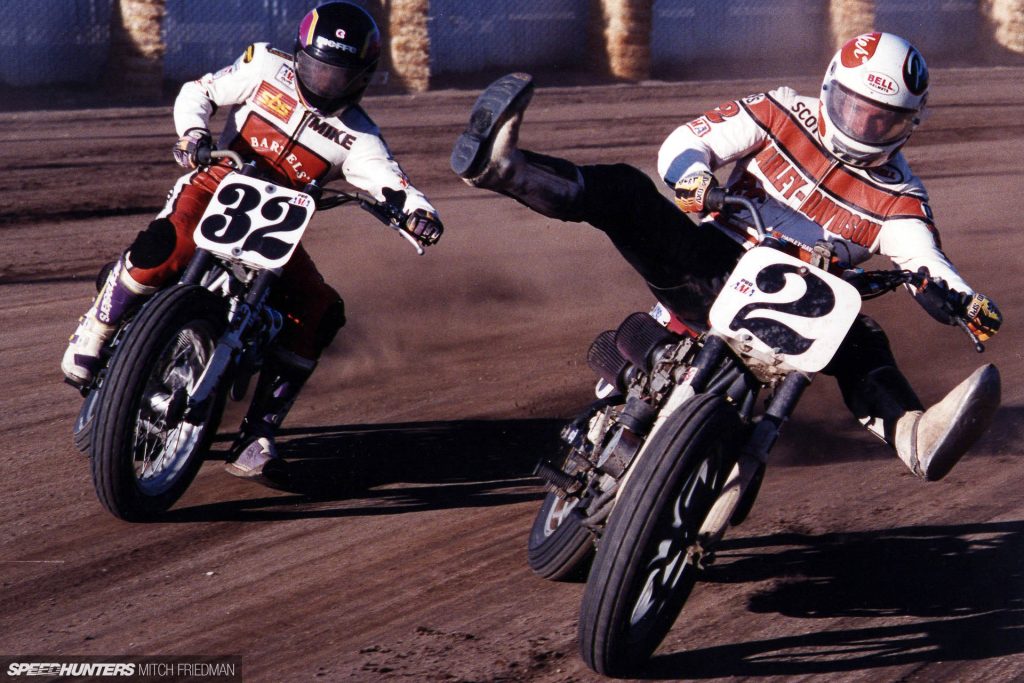The tracks on which motorcycle racing unfolds are not merely paths of asphalt; they are the theaters of speed, skill, and spectacle. Over the years, motorcycle racing tracks have evolved from simple dirt roads to cutting-edge, high-tech arenas that host some of the most thrilling races in the world. This article delves into the captivating journey of motorcycle racing tracks, tracing their transformation from historic circuits to the modern venues that define the sport today.

The Birth of Speed: Early Tracks and Challenges
In the early days of motorcycle racing, tracks were far from the well-designed circuits we know today. Races were often held on public roads, beaches, and even makeshift tracks. The iconic Isle of Man TT, which began in 1907, epitomized this era. Riders navigated through narrow, winding roads bordered by stone walls and hedges, showcasing not only their skill but also their audacity.
Safety was a luxury seldom afforded in these races. Spectators stood perilously close to the action, separated by little more than hay bales. As the popularity of motorcycle racing grew, the need for purpose-built tracks became apparent.
The Emergence of Purpose-Built Circuits: Mid-20th Century
The mid-20th century marked a turning point in the evolution of motorcycle racing tracks. As safety concerns mounted and the desire for standardized racing environments grew, purpose-built circuits began to emerge. These tracks were meticulously designed to accommodate the unique challenges of motorcycle racing, with wider corners, defined straights, and increased safety measures.
One of the most iconic tracks of this era is the Assen TT Circuit in the Netherlands, which hosted its first race in 1925. The Assen track not only paved the way for modern circuits but also introduced the concept of grandstands and spectator facilities. Tracks like Daytona International Speedway in the United States and Brands Hatch in the United Kingdom also came into prominence, showcasing the evolution of track design.
Safety and Innovation: Late 20th Century
The late 20th century witnessed a renewed emphasis on safety and technological innovation in motorcycle racing tracks. As motorcycles became faster and more powerful, track designs needed to adapt to accommodate higher speeds while prioritizing rider safety. Tracks were equipped with run-off areas, gravel traps, and tire barriers to minimize the impact of crashes.
The Suzuka Circuit in Japan stands as a prime example of this evolution. The track’s unique figure-eight layout posed both challenges and opportunities for racers. This era also saw the introduction of modern racetrack materials, such as high-quality asphalt and advanced tire compounds, which further enhanced the racing experience.
The Modern Arena: 21st Century Advancements
The 21st century ushered in a new era of motorcycle racing tracks, characterized by cutting-edge technology, entertainment facilities, and immersive fan experiences. Tracks like the Circuit of the Americas (COTA) in the United States and the Termas de Río Hondo in Argentina set a new standard for modern circuits. These tracks offer state-of-the-art amenities, luxurious hospitality areas, and innovative spectator viewpoints.
However, it’s not just about the grandeur. Modern tracks leverage advanced engineering techniques to optimize safety and racing conditions. Computer simulations, 3D modeling, and laser scanning are used to create tracks that provide challenging yet manageable corners, straights that allow for overtaking opportunities, and run-off areas that mitigate the consequences of accidents.
Balancing Tradition and Innovation
While modern motorcycle racing tracks have undoubtedly raised the bar in terms of facilities and technology, there is a delicate balance to be struck between tradition and innovation. Many fans hold a deep affection for the historic circuits that have witnessed decades of racing history. Tracks like Silverstone, Mugello, and Phillip Island continue to captivate fans with their unique layouts and rich legacies.
As the sport evolves, the challenge lies in preserving the essence of motorcycle racing while embracing advancements. Finding the right equilibrium between safety, entertainment, and the authentic racing experience is a constant endeavor for track designers, organizers, and governing bodies.
Conclusion: Where Past Meets Present
The evolution of motorcycle racing tracks is a testament to the sport’s unwavering commitment to progress and excellence. From the treacherous roads of the past to the meticulously engineered circuits of today, tracks have adapted to the changing needs of riders, teams, and fans. Each circuit tells a story—a story of triumphs, challenges, and the unrelenting pursuit of speed.
As motorcycle racing continues to captivate audiences worldwide, the tracks on which the drama unfolds will remain a central part of the narrative. Whether it’s the nostalgia of historic circuits or the excitement of modern arenas, these tracks serve as the canvases on which racing dreams are painted, creating memories that endure through the ages. The evolution of motorcycle racing tracks is a living testament to the sport’s evolution, embodying the spirit of competition, innovation, and the unquenchable thirst for victory.